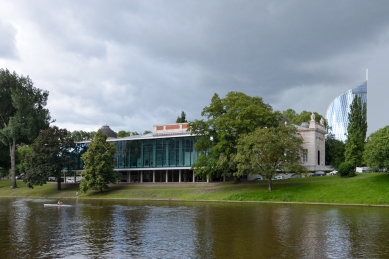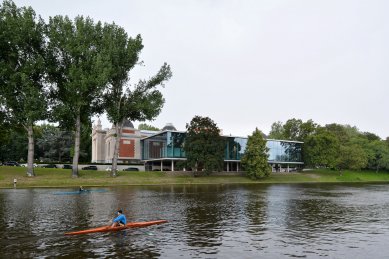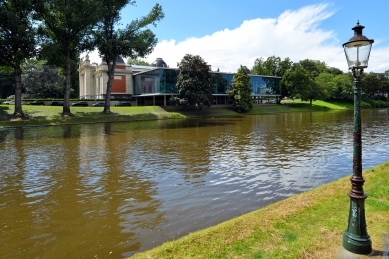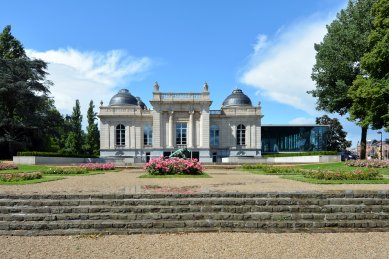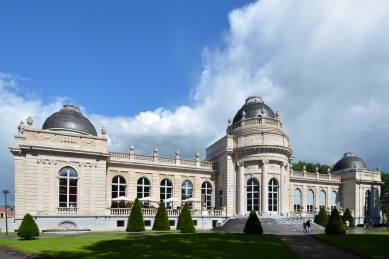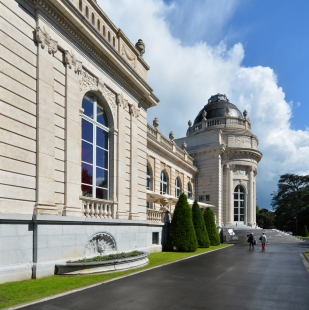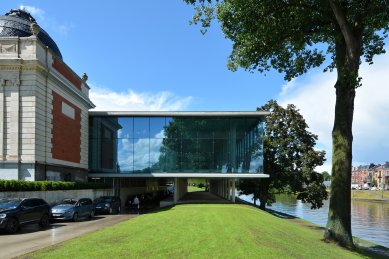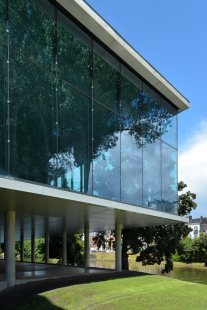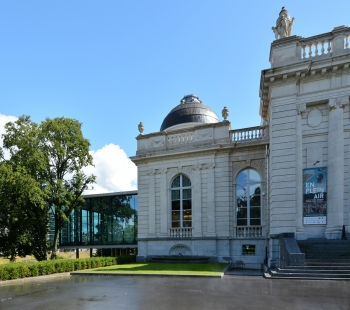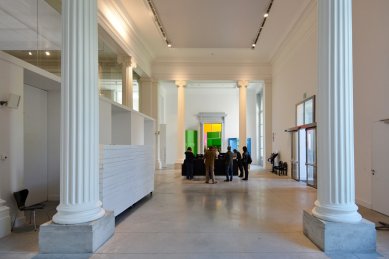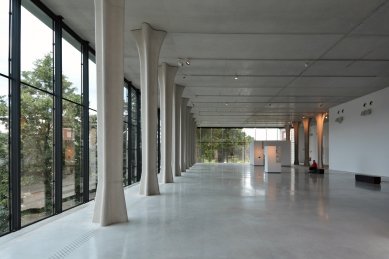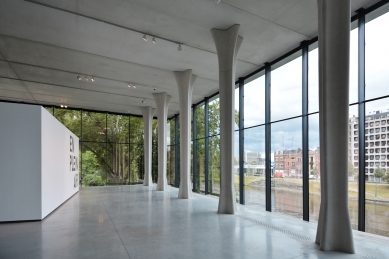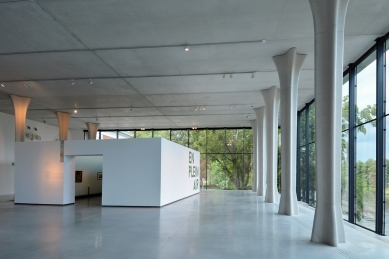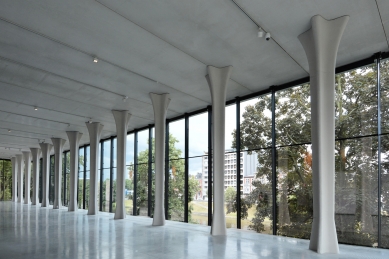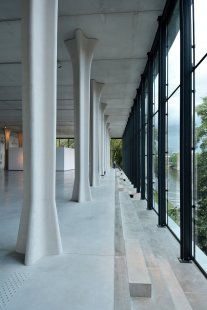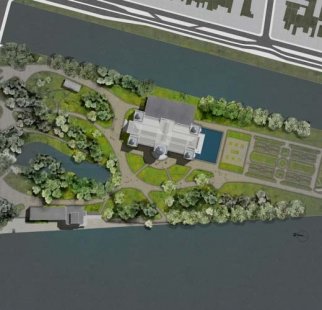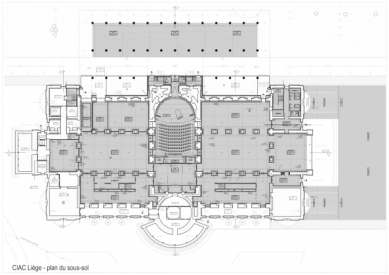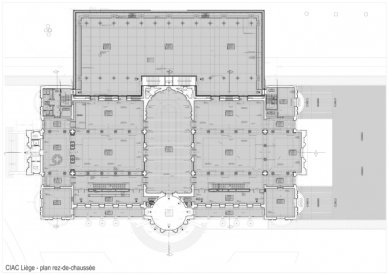
La Boverie
International Center for Art and Culture of Liège

The World Expo organized in 1905 in Walloon Liège was the fifteenth event since the opening of the Crystal Palace (London, 1851), which not only aimed to celebrate cultural and industrial progress but also to commemorate three-quarters of a century of Belgian independence. The six-month exhibition featuring three dozen countries attracted seven million visitors to the twenty-hectare Parc de la Boverie. After the grand event, most of the pavilions were demolished. In 1930, the World Expo returned to Liège, but only a small portion fit into the La Boverie park (named after the original pastures for cattle), while the main exhibition was located in the industrial suburb.
One of the few preserved buildings in the park at the southern tip of the island in the middle of the Meuse River was the historic Palais des Beaux Arts, which was handed over to the city after the World Expo and still serves as a museum of contemporary art (Musee d'Art Moderne et d'Art Contemporaine).
Six years ago, French specialist in museum buildings Rudy Ricciotti, together with the Brussels studio p.HD, won the competition for the reconstruction of the historic building and its expansion with an eastern wing. The architect's intention was to “elevate the museum again, restore its energy, and return its qualities.” The added wing consists of two reinforced concrete slabs hovering on 26 concrete columns. The eight-meter-high glass extension offers 1200 m² of exhibition space and simultaneously connects the gallery with the surrounding park. The expanding concrete columns, with their profile, resemble grown trunks, linking to the row of trees lining the waterfront.
One of the few preserved buildings in the park at the southern tip of the island in the middle of the Meuse River was the historic Palais des Beaux Arts, which was handed over to the city after the World Expo and still serves as a museum of contemporary art (Musee d'Art Moderne et d'Art Contemporaine).
Six years ago, French specialist in museum buildings Rudy Ricciotti, together with the Brussels studio p.HD, won the competition for the reconstruction of the historic building and its expansion with an eastern wing. The architect's intention was to “elevate the museum again, restore its energy, and return its qualities.” The added wing consists of two reinforced concrete slabs hovering on 26 concrete columns. The eight-meter-high glass extension offers 1200 m² of exhibition space and simultaneously connects the gallery with the surrounding park. The expanding concrete columns, with their profile, resemble grown trunks, linking to the row of trees lining the waterfront.
The English translation is powered by AI tool. Switch to Czech to view the original text source.
0 comments
add comment


